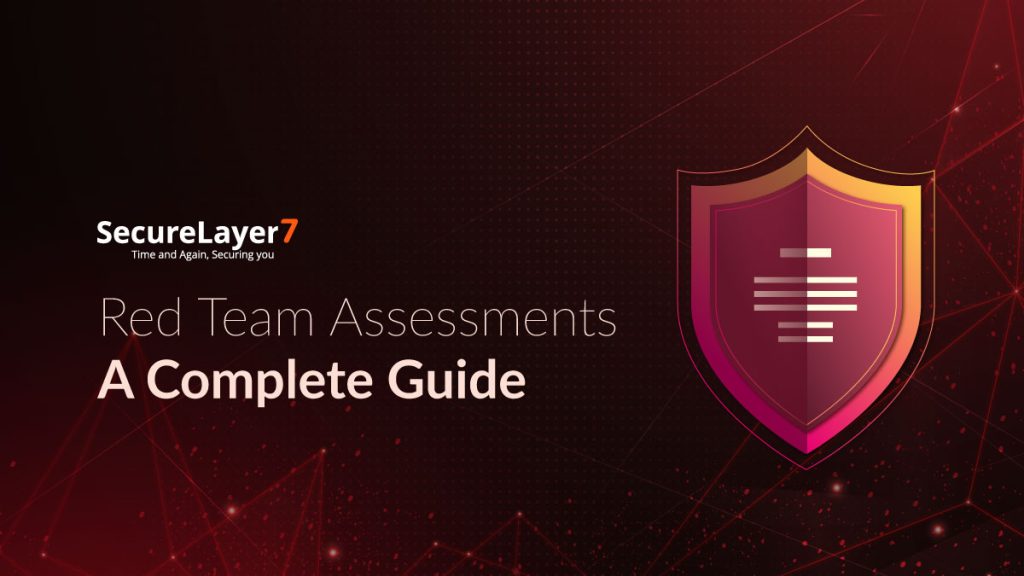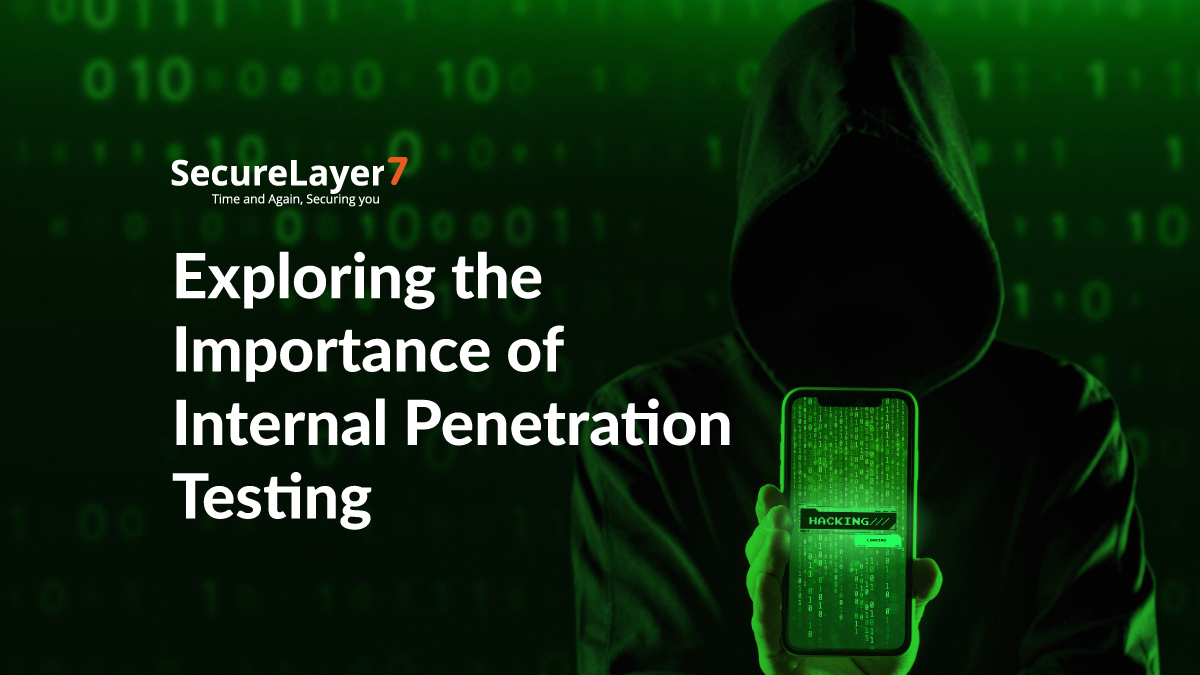
Exploring the Importance of Internal Penetration Testing
November 29, 2023
Source Code Review: All You Need To Know
December 4, 2023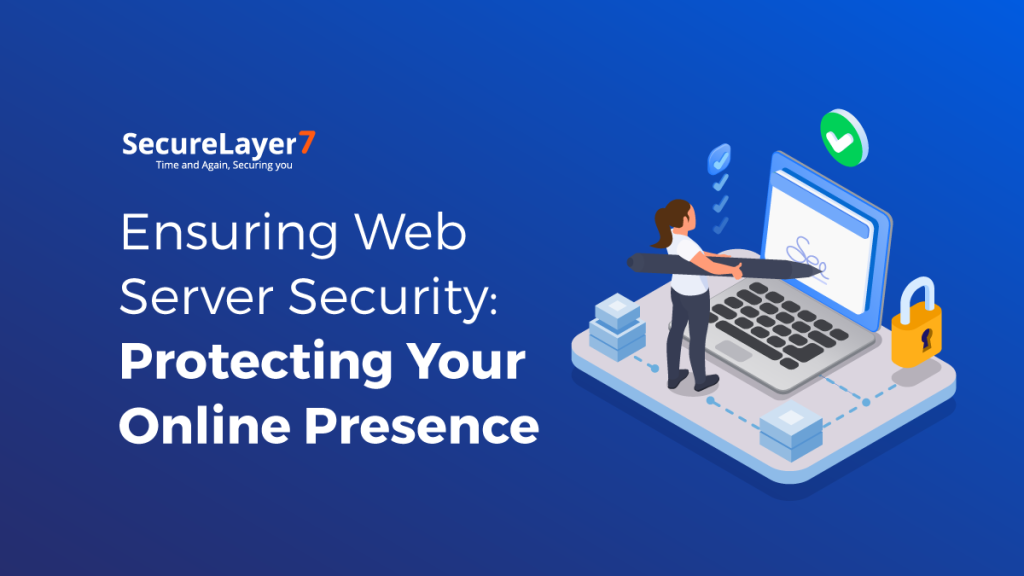
Web server security is the cornerstone of a robust online presence. In an era dominated by digital interactions, the integrity and protection of web servers have never been more critical.
The ever-evolving landscape of cyber threats demands unwavering vigilance and proactive measures to safeguard sensitive data, maintain uptime, and ensure uninterrupted online services.
In this blog, we cut through the clutter to deliver a concise yet comprehensive guide to web server security.
We will explore the core principles, common threats, best practices, and essential steps you can take to secure your web server effectively.
So without further ado, let’s begin.
Understanding Web Server Security
Web server security is not an optional aspect of online operations; it’s a fundamental requirement.
What is Web Server Security?
At its core, web server security refers to the collection of practices, protocols, and technologies implemented to protect your web server from various threats and vulnerabilities.
These safeguards are essential because web servers serve as the gateway for your website or web application, making them the first line of defense against cyberattacks.
Why is Web Server Security Essential?
Now, why is web server security non-negotiable in the digital realm? The answer lies in the relentless pursuit of cybercriminals who exploit vulnerabilities in web servers to gain
unauthorized access, steal data, or disrupt services.
Here are the key reasons why web server security is a must:
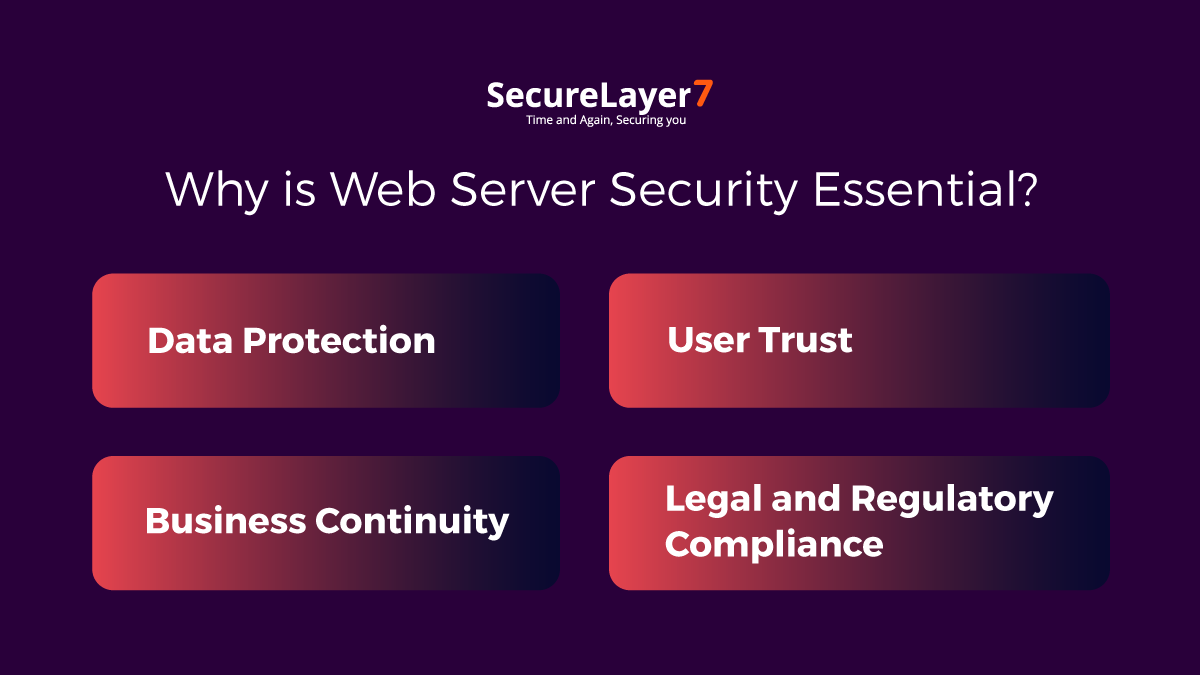
- Data Protection: Your web server often contains sensitive user data, financial information, and intellectual property. Without robust security, this valuable data is at risk of theft or compromise.
- Business Continuity: A breach or downtime due to an attack can translate into significant financial losses and damage to your reputation. A secure web server ensures uninterrupted business operations.
- User Trust: Users expect their data to be handled with care and protected from cyber threats. A secure web server fosters trust among your audience.
- Legal and Regulatory Compliance: Many industries have strict regulations regarding data protection. Failure to meet these requirements can lead to legal consequences and fines.
Potential Risks and Consequences
The repercussions of inadequate web server security are far-reaching and severe:
- Data Breaches: Unauthorized access can result in the exposure of sensitive user information, leading to privacy violations and potential legal action.
- Service Disruption: DDoS attacks or other security breaches can cause website downtime, eroding customer trust and revenue.
- Financial Loss: Remedying a security breach is costly, from legal fees to compensating affected parties.
- Reputation Damage: News of a security breach can tarnish your brand’s reputation, leading to customer attrition.
Common Threats and Vulnerabilities
In the ever-evolving landscape of web server security, knowledge is power. To effectively protect your web server, you must first understand the adversaries you’re up against.
In this section, we’ll explore some of the most prevalent threats that web servers encounter and shed light on how these vulnerabilities can be exploited by malicious actors.
1. DDoS Attacks (Distributed Denial of Service):
Threat Overview: DDoS attacks involve overwhelming a web server with an avalanche of traffic, rendering it inaccessible to legitimate users. Attackers often use botnets, networks of compromised devices, to orchestrate these assaults.
Exploitation: Attackers exploit the finite resources of a web server, such as bandwidth and processing power, by flooding it with traffic. This surge in requests can cripple the server, causing it to become unresponsive.
2. SQL Injection:
Threat Overview: SQL injection is a technique used to manipulate a web application’s database by injecting malicious SQL queries through input fields. If successful, attackers can access, modify, or delete sensitive data.
Exploitation: Vulnerable web applications fail to validate and sanitize user input properly. Attackers insert malicious SQL code in input fields, tricking the server into executing unintended database operations.
3. Cross-Site Scripting (XSS):
Threat Overview: XSS attacks involve injecting malicious scripts into web pages viewed by other users. These scripts can steal cookies, session tokens, or other sensitive information.
Exploitation: Attackers exploit inadequate input validation and output encoding in web applications. By injecting malicious scripts, they can execute arbitrary code within the user’s browser, potentially leading to data theft or other harmful actions.
4. Directory Traversal:
Threat Overview: Directory traversal attacks occur when attackers gain unauthorized access to directories and files on the web server by exploiting weaknesses in input handling.
Exploitation: Attackers manipulate input parameters to navigate beyond the intended directory structure, gaining access to sensitive files or even system files. This can result in data exposure and server compromise.
5. Brute Force Attacks:
Threat Overview: In brute force attacks, adversaries repeatedly attempt to guess usernames and passwords to gain unauthorized access to web servers.
Exploitation: Attackers use automated scripts to systematically test combinations of usernames and passwords until they find the correct credentials. Weak or easily guessable passwords are particularly susceptible to this type of attack.
Best Practices for Web Server Security
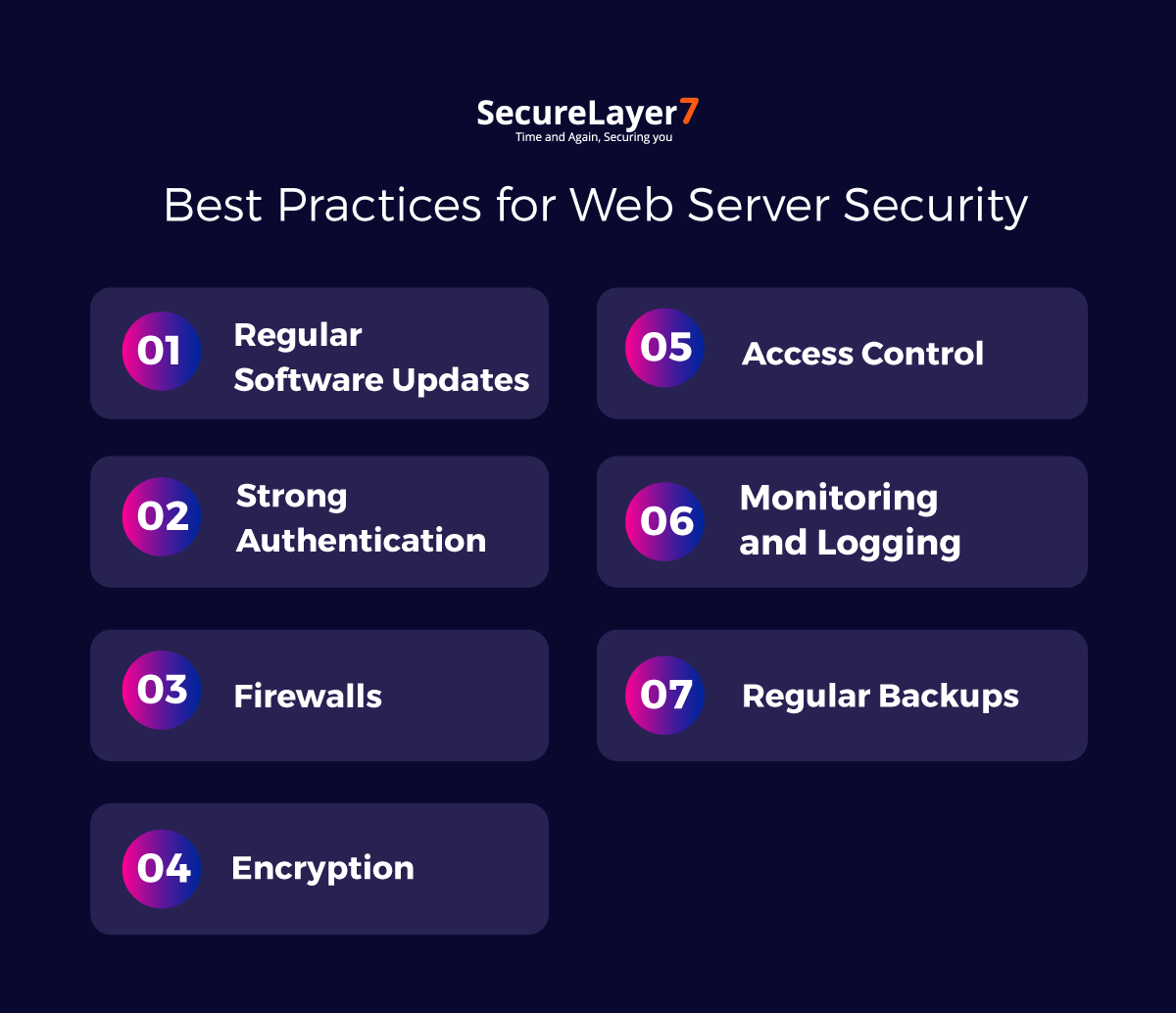
To safeguard your web server effectively, implementing a set of best practices is paramount. These practices form the foundation of a robust security strategy, helping you mitigate risks and protect against potential threats.
Here’s a comprehensive list of best practices to enhance web server security:
1. Regular Software Updates:
Keeping your server software and applications up-to-date is a fundamental security measure. Software updates often include patches for known vulnerabilities, making it essential to stay current to prevent exploitation.
2. Strong Authentication:
Implement strong authentication mechanisms to thwart unauthorized access attempts. This includes using complex, unique passwords and considering two-factor authentication (2FA) for an added layer of security.
3. Firewalls:
Firewalls act as a barrier between your web server and the internet, filtering incoming and outgoing traffic. Properly configured firewalls help block malicious traffic and protect against unauthorized access.
4. Encryption:
Enable HTTPS and use SSL/TLS protocols to encrypt data in transit. This ensures that data exchanged between your web server and users remains confidential and secure, preventing interception and tampering.
5. Access Control:
Implement strict access control measures to restrict access to sensitive directories and files. Utilize permissions and role-based access control (RBAC) to ensure that only authorized personnel can access critical resources.
6. Monitoring and Logging:
Continuous monitoring of server activity and maintaining comprehensive logs is crucial for early threat detection and incident response. Logs provide valuable insights into potential security breaches.
7. Regular Backups:
Create regular backups of your server data and configurations. In the event of a security incident, backups enable you to restore your system to a known, secure state, reducing downtime and data loss.
By adhering to these best practices, you establish a strong foundation for web server security. However, it’s important to note that security is an ongoing process, and vigilance is key to maintaining a secure environment.
Security Tools and Solutions
While following best practices is vital, you can bolster your web server’s security further with the help of specialized security tools and solutions. These technologies provide an added layer of defense against various threats. Here are some essential security tools and solutions for web server protection:
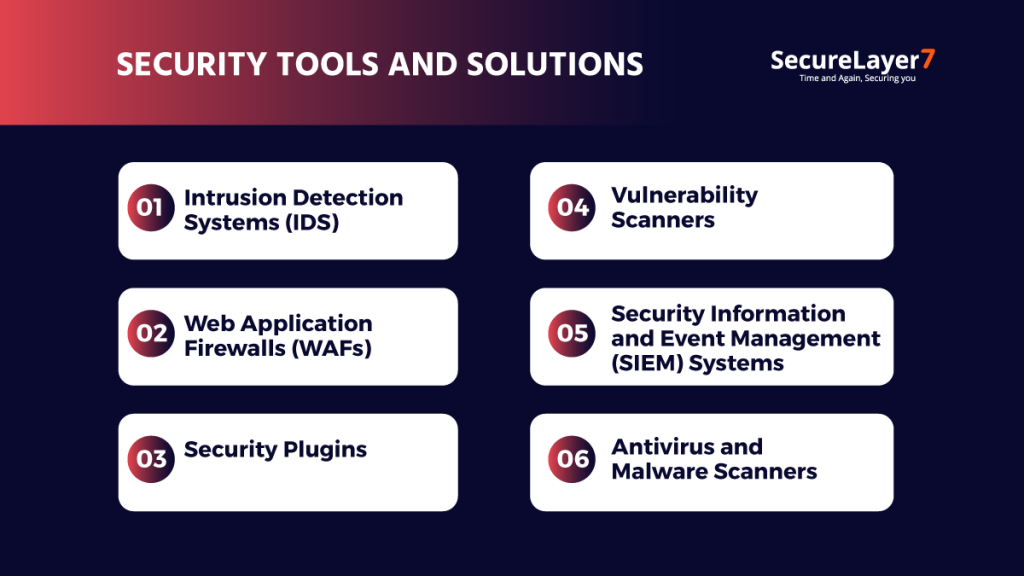
1. Intrusion Detection Systems (IDS):
IDS solutions monitor network traffic for suspicious patterns or activities, alerting you to potential threats in real-time. They help identify and respond to security breaches promptly.
2. Web Application Firewalls (WAFs):
WAFs are designed to protect web applications from a wide range of attacks, including SQL injection and XSS. They inspect incoming traffic and block malicious requests before they reach your web server.
3. Security Plugins:
For popular content management systems (CMS) like WordPress, security plugins can enhance protection. They offer features such as login attempt monitoring, malware scanning, and firewall capabilities.
4. Vulnerability Scanners:
Automated vulnerability scanners assess your web server for known weaknesses and vulnerabilities. Regular scans help you identify and address potential security issues proactively.
5. Security Information and Event Management (SIEM) Systems:
SIEM systems provide centralized monitoring and analysis of security events across your network. They enable you to correlate data from various sources to detect and respond to security incidents effectively.
6. Antivirus and Malware Scanners:
Install antivirus and malware scanners to regularly check for malicious files and scripts on your web server. These tools can help prevent malware infections.
By incorporating these security tools and solutions into your web server environment, you create multiple layers of defense, making it more challenging for attackers to compromise your system.
However, it’s essential to configure and maintain these tools properly to ensure their effectiveness.
Incident Response Plan
Even with robust safeguards in place, no system is entirely immune to potential breaches. That’s why it’s crucial to have a well-defined incident response plan.
In this section, we’ll underscore the importance of such a plan and outline the essential steps to take when a security breach occurs.
Importance of an Incident Response Plan
An incident response plan serves as your playbook in times of crisis. It allows you to respond swiftly and effectively when a security breach occurs, minimizing damage and downtime. Here’s why it’s vital:
Rapid Response: A plan ensures that your team knows exactly what to do when a breach is detected, reducing response time.
Containment: It helps isolate the breach to prevent further damage and limit the exposure of sensitive data.
Mitigation: With predefined steps, you can take immediate actions to mitigate the impact of the breach.
Compliance: In many cases, regulatory authorities require organizations to have a documented incident response plan.
Steps to Take When a Breach Occurs
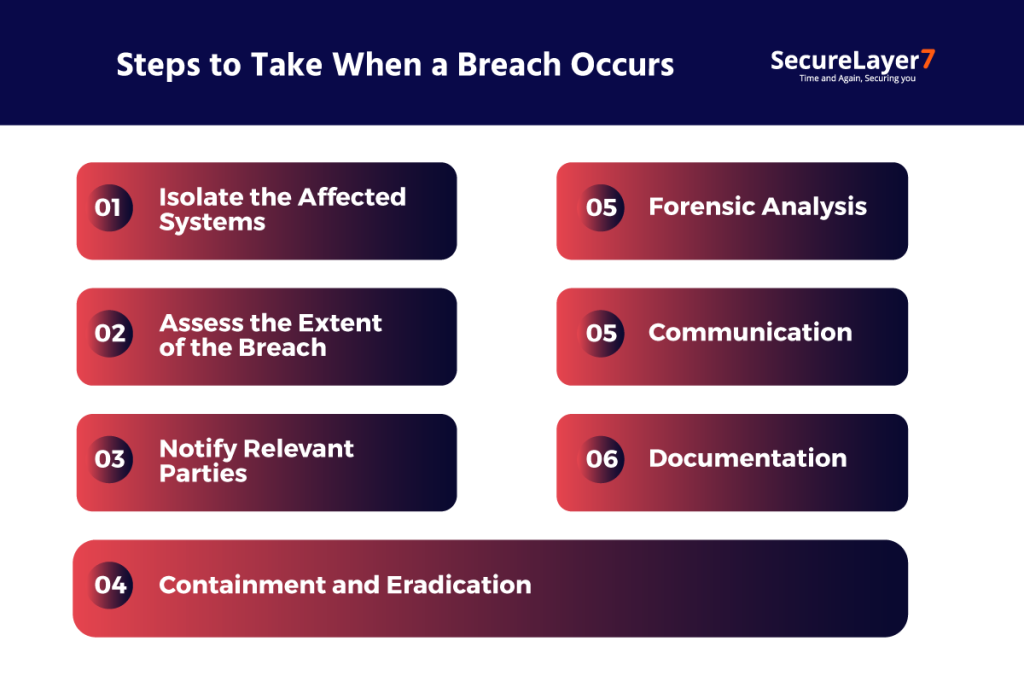
When a security breach is detected, follow these key steps as part of your incident response plan:
Isolate the Affected Systems: Immediately disconnect or isolate the compromised systems from the network to prevent further damage.
Assess the Extent of the Breach: Determine the scope of the breach, what data may have been exposed, and how the intrusion occurred.
Notify Relevant Parties: Inform your internal response team, including IT personnel and management. Additionally, if legally required, notify affected parties and regulatory authorities.
Containment and Eradication: Take steps to contain the breach, remove malicious code, and eliminate vulnerabilities to prevent future attacks.
Forensic Analysis: Conduct a thorough investigation to understand the breach’s source, impact, and potential data loss.
Communication: Maintain clear and transparent communication with affected parties, informing them about the incident, the actions taken, and any necessary steps they should follow.
Documentation: Document every aspect of the incident, including your response actions, findings, and improvements to prevent similar incidents in the future.
Summing Up
In conclusion, web server security is a non-negotiable aspect of maintaining a resilient online presence. We’ve explored the critical elements, from understanding common threats to implementing best practices and deploying security tools.
The key takeaways are clear:
- Prioritize regular updates, strong authentication, firewalls, encryption, access control, monitoring, and backups.
- Embrace security tools and solutions to fortify your defenses.
- Prepare for the worst with a well-defined incident response plan.
Remember that web server security is an ongoing process. Continuous vigilance and improvement are essential to adapt to evolving threats in the digital landscape.
By staying proactive and safeguarding your web server, you not only protect your data but also ensure a safe and reliable online experience for your users. Stay secure, stay vigilant.
SecureLayer7: Your Cybersecurity Partner
At SecureLayer7, we’re your dedicated cybersecurity allies. With a team of expert ethical hackers, we offer tailored solutions to safeguard your digital assets.
Why Us:
Expertise: We’re cybersecurity experts, staying ahead of threats.
Innovation: We provide bespoke security solutions that adapt to your needs.
Ethical Hacking: Identifying vulnerabilities before bad actors do.
Compliance: We help you meet industry standards.
Our Services:
Vulnerability Assessment: Identify and fix weaknesses.
Managed Security: 24/7 monitoring and threat response.
Incident Response: Swiftly contain and investigate breaches.
Security Training: Equip your team with cybersecurity skills.
Choose SecureLayer7 for peace of mind and focus on your business. Contact us to fortify your digital future.


